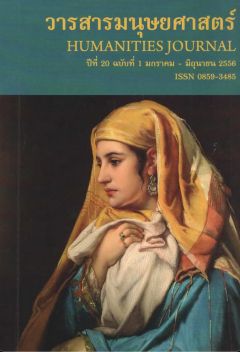การอวตารในศาสนาฮินดู
Main Article Content
Abstract
บทความนี้มุ่งศึกษาความคิดเรื่องการอวตารในศาสนาฮินดูตั้งแต่อดีตจนถึงปัจจุบัน ในด้านความหมาย พันธกิจ การสำแดงรูป และระดับการอวตาร โดยศึกษาจากคัมภีร์ภาควัตปุราณะ คัมภีร์ศิวปุราณะ และคัมภีร์ต่างๆ ในศาสนาฮินดู รวมไปถึงการศึกษาตัวอย่างองค์อวตารในยุคปัจจุบัน อาทิ ท่านไส บาบาแห่ง เซอร์ดี และท่านศรี สัตยา ไส บาบา ผลการศึกษาพบว่า การอวตารคือ การแบ่งภาคหรือการลงมาของเทพเจ้าสู่โลกมนุษย์ ด้วยมีพันธกจิสำคัญในการลงมาปราบ สั่งสอนและชี้นำหนทางไปสู่สัจธรรมสูงสุด และเป็นต้นแบบการประพฤติปฏิบัติแก่มนุษย์ การสำแดงรูปขององค์อวตารนั้นปรากฏในรูปมนุษย์ อมนุษย์ และสัตว์ แม้องค์อวตารจะถูกจำกัดในร่างมนุษย์ อมนุษย์ และสัตว์ แต่ยังคงดำรงคุณสมบัติเฉกเช่นเดียวกับพระเจ้ คือ ทรงไว้ด้วยมหิทธานุภาพ ความเป็นสัพพัญญู และปรากฏพระองค์ในทุกหนทุกแห่ง ระดับการอวตารนั้นสามารถแบ่งได้ 2 ระดับคือ การอวตารย่อย และการอวตารใหญ่
The Avatār in Hinduism
Catthaleeya Aungthonggumnerd
This study aimed to investigate the concept of avatars in Hinduism from the past up to present in terms of meaning, obligation, manifestation, and levels of avatar. The study was conducted from Bhāgavata Puraņa, Siva Puraņa and other sacred books, as well as examples of avatars at present, including Sai Baba of Shirdi and Sri Sathya Sai Baba. It was found that the phenomenon of an avatar is a reincarnation of a deity obliged to subdue, teach, act as a role model, and guide humanity to the ultimate truth. The manifestation of avatars is in forms of human beings, supernatural beings, and animals. Although
avatars may come in such three forms, they possess deity roperties, including omnipotence, omniscience and omnipresence. In addition, there are two levels of avatar, namely direct and indirect avatars.


